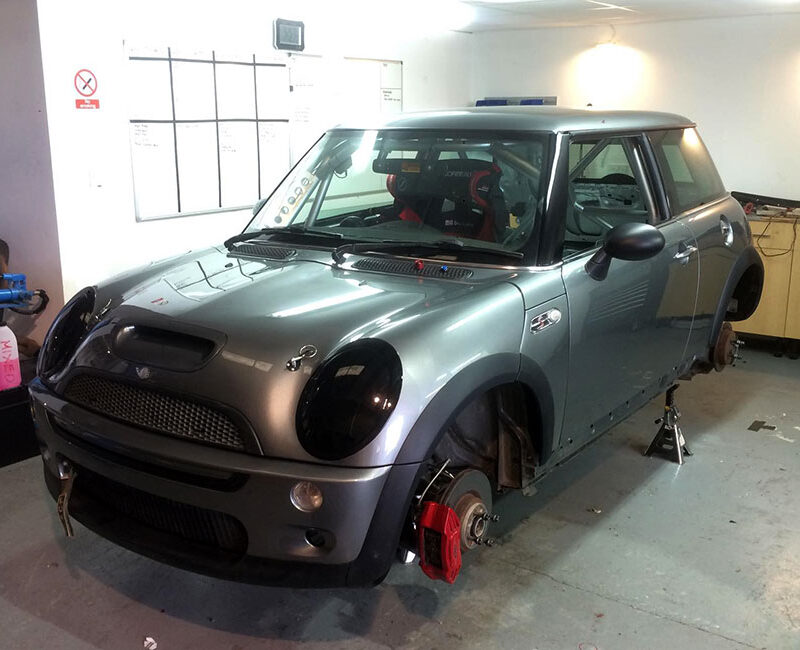Weight Reduction Strategies for Track Cars
In the quest for speed and agility on the track, reducing the weight of your car is as crucial as increasing its performance. Weight reduction not only improves acceleration and handling but also puts less strain on the brakes and suspension, making the car more efficient overall. This article explores various strategies for shedding weight from your track car effectively, enhancing its performance on the circuit.
Understanding the Impact of Weight on Performance
Reducing a car’s weight has a multifaceted impact: it can improve acceleration, braking, handling, and even fuel efficiency. Each kilogram removed from the car means less effort is required to move and stop, allowing for quicker lap times and more agile handling.
Start with the Interior
- Remove Non-essential Components: Strip out unnecessary items like rear seats, carpets, sound-deadening material, interior panels, and the audio system. These are often the easiest and most cost-effective weight reductions.
- Replace with Lightweight Materials: For components that need to stay, such as the dashboard or door panels, consider replacing them with lighter materials like carbon fibre or aluminium.
- Racing Seats: Swap out factory seats for lightweight racing seats. This not only reduces weight but also improves driver stability and safety.
Focus on the Exterior and Body
- Lightweight Body Panels: Replace stock panels like bonnets, boot lids, and even doors with lighter versions made from materials like carbon fibre or fibreglass.
- Polycarbonate Windows: Replacing glass windows with polycarbonate can significantly reduce weight, especially in larger vehicles. It’s worth noting this doesn’t save a lot of weight and makes the car difficult to use on the road.
- Aerodynamic Additions: While adding aerodynamic features like spoilers and splitters, choose lightweight materials and designs.
Under the Bonnet
- Battery: Swap the standard battery for a lightweight, high-performance alternative. Some racing batteries offer significant weight savings.
- Lightweight Wheels and Brakes: Lightweight wheels reduce unsprung mass, improving handling and acceleration. Similarly, some high-performance brake components are lighter than their standard counterparts.
- Engine Components: Consider lightweight components for the engine, such as pulleys and flywheels. Be mindful that these changes can affect the car’s balance and reliability.
Suspension and Drivetrain
- Suspension Components: Upgrading to performance-oriented suspension parts can sometimes result in weight savings.
- Simplified Drivetrain: In some builds, particularly for racing, simplifying the drivetrain (like converting to two-wheel drive from all-wheel drive) can save a significant amount of weight.
The Importance of Balance
- Maintain Weight Distribution: While reducing weight, it’s crucial to maintain or improve the car’s weight distribution for optimal handling and stability.
- Incremental Changes: Make weight reduction changes incrementally and test the car’s performance. Drastic changes can alter the car’s dynamics significantly.
Safety Considerations
- Safety Should Not Be Compromised: While removing weight, ensure that you do not compromise the safety of the vehicle. Safety equipment should always be a priority.
FAQs for Weight Reduction in Track Cars
Q: How much weight reduction is noticeable on the track? A: Even small reductions can improve performance, but significant changes (10% or more of the car’s weight) can dramatically transform how the car handles and performs.
Q: Does weight reduction impact a car’s road legality? A: Certain modifications may not be road-legal (like removing headlights or replacing windscreens). Always check regulations if you plan to drive the car on public roads.
Q: Is there a point where weight reduction becomes detrimental? A: Excessive weight reduction, especially if it disrupts the car’s balance or structural integrity, can be detrimental. It’s about finding the right balance.
Q: Can weight reduction improve fuel efficiency? A: In a track setting, fuel efficiency improvements are minimal. The primary goal is improved performance.
Q: Should I focus on reducing weight or adding power? A: Ideally, both. However, the saying “adding power makes you faster on the straights; subtracting weight makes you faster everywhere” holds true in motorsport.
In conclusion, weight reduction is a key aspect of preparing a track car. It requires a thoughtful approach to ensure that each modification contributes positively to the car’s performance without compromising safety. By methodically reducing weight and maintaining balance, your track car can achieve higher levels of agility and speed, making every lap more exhilarating and effective. Remember, in racing, sometimes less really is more.

